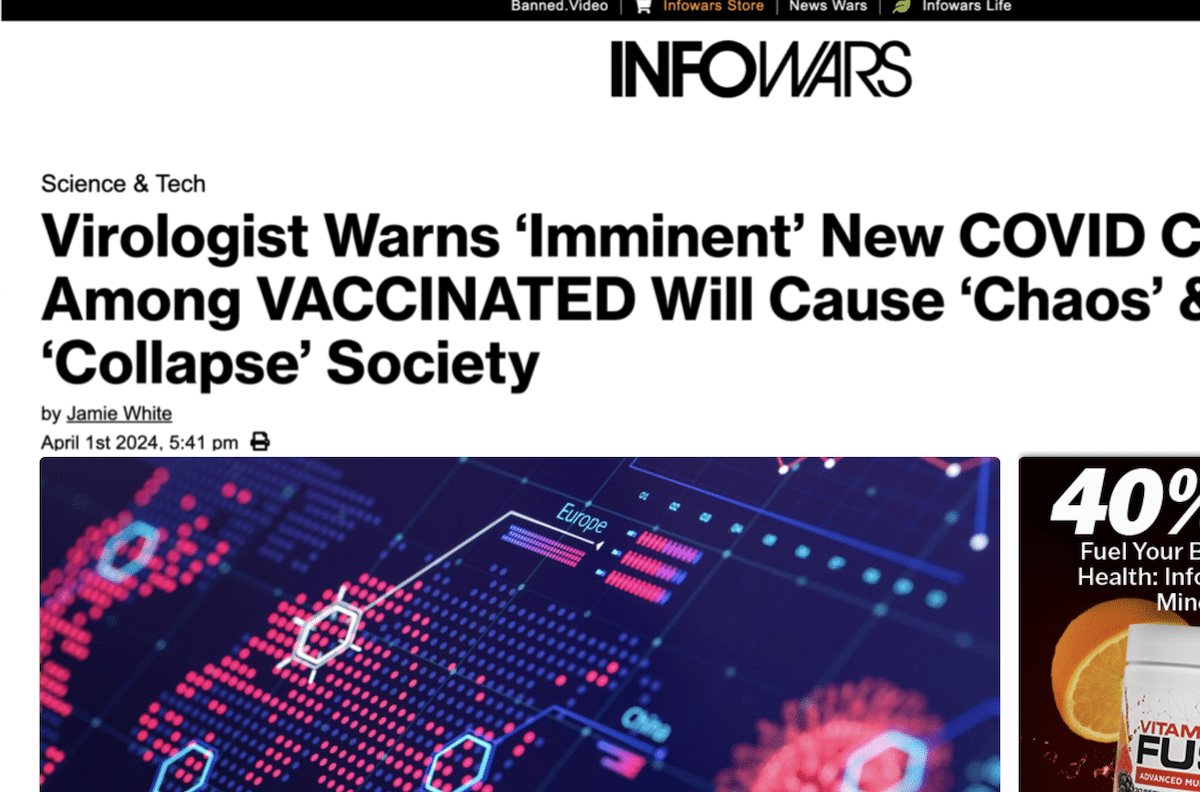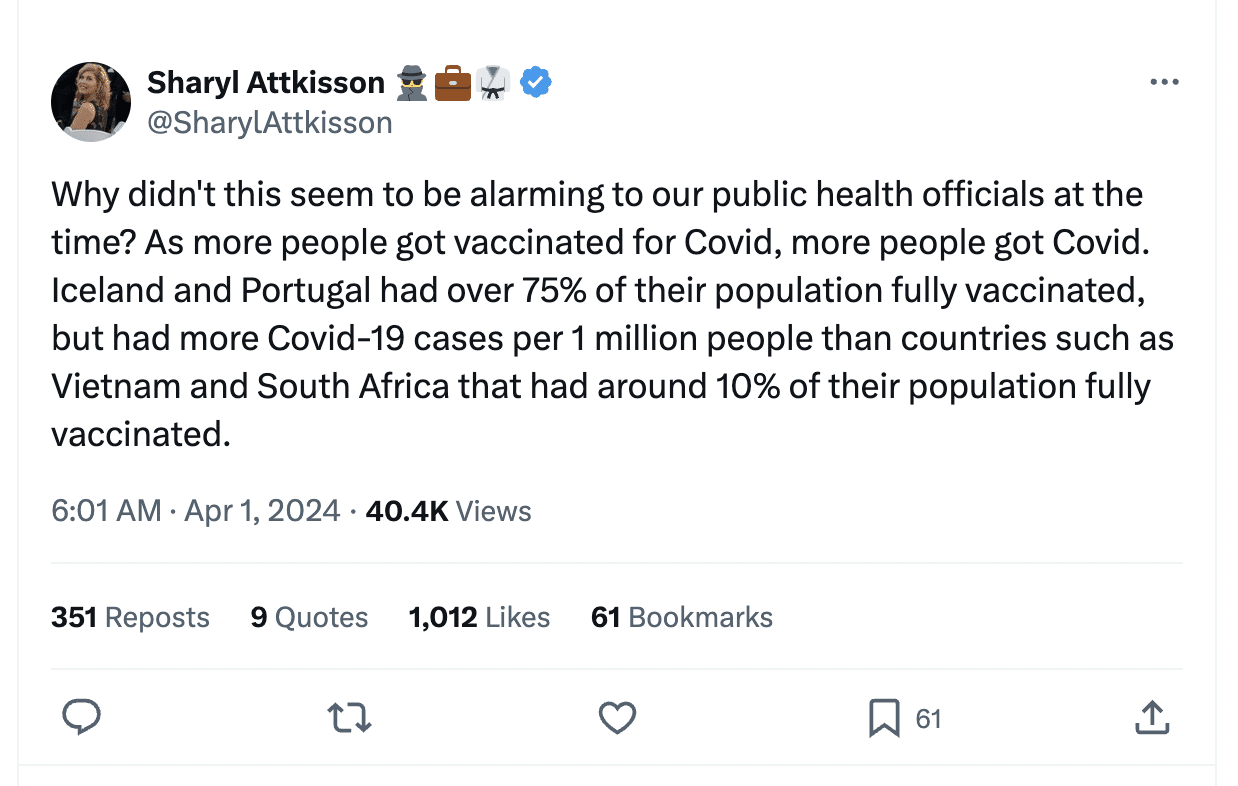- Health
Tweet by NYC Department of Health and Mental Hygiene misinterpreted; no evidence that XBB.1.5 preferentially infects vaccinated people
Key takeaway
The Omicron variant XBB.1.5 contains several mutations that make it more infectious and more capable of evading the immune system. COVID-19 vaccination is highly effective at protecting people against severe COVID-19 and death, and to a lesser extent, against infection as well. The data so far indicates that unvaccinated people are more likely to develop COVID-19 and die compared to vaccinated people.
Reviewed content
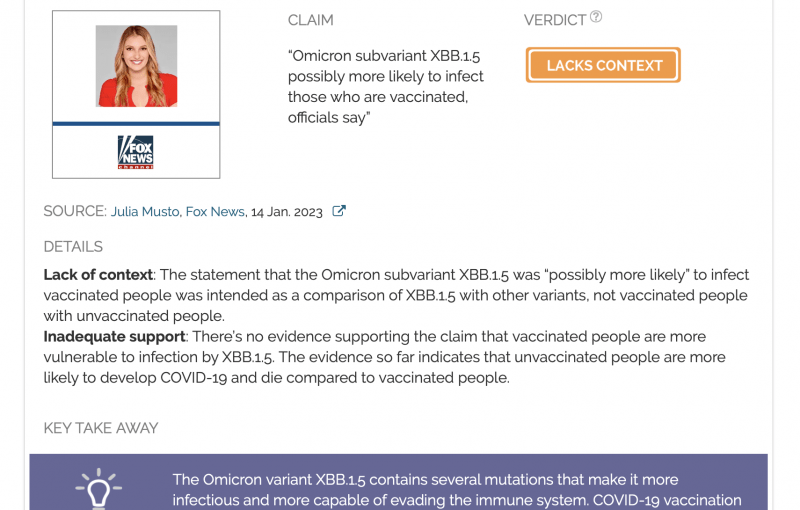
Verdict:
Claim:
“Omicron subvariant XBB.1.5 possibly more likely to infect those who are vaccinated, officials say”
Verdict detail
Lack of context: The statement that the Omicron subvariant XBB.1.5 was “possibly more likely” to infect vaccinated people was intended as a comparison of XBB.1.5 with other variants, not vaccinated people with unvaccinated people.
Inadequate support: There’s no evidence supporting the claim that vaccinated people are more vulnerable to infection by XBB.1.5. The evidence so far indicates that unvaccinated people are more likely to develop COVID-19 and die compared to vaccinated people.
Full Claim
“Omicron subvariant XBB.1.5 possibly more likely to infect those who are vaccinated, officials say”
Review
A tweet by the New York City Department of Health and Mental Hygiene (@nychealthy), posted on 13 January 2023, generated confusion over its statement that “Omicron subvariant XBB.1.5 now accounts for 73% of all sequenced COVID-19 cases in NYC. XBB.1.5 is the most transmissible form of COVID-19 that we know of to date and may be more likely to infect people who have been vaccinated or already had COVID-19”.
Replies to the tweet showed that some social media users interpreted the statement to mean that vaccinated people are more vulnerable to infection by XBB.1.5 compared to unvaccinated people (see examples here and here). This impression was also reinforced by the clickbait headline of a Fox News article about the same tweet: “Omicron subvariant XBB.1.5 possibly more likely to infect those who are vaccinated, officials say”.
The Fox News article accrued more than 2,700 user engagements on Twitter according to social media analytics tool CrowdTangle. Most of these can be attributed to Henning Rosenbusch, a journalist with more than 39,000 followers on Twitter, who shared a screenshot of the Fox News article, calling it “a pandemic of the vaccinated”. Robert Malone, a former scientist who has repeatedly claimed, inaccurately, that COVID-19 vaccines are unsafe, also shared the Fox News article on Twitter, accompanied by the remark “Who could have possibly predicted this !!??!!” and a sunglasses emoji.
However, the claim is false, as Ajay Sethi, an epidemiologist and professor at the University of Wisconsin-Madison, told Health Feedback. The original tweet by the @nychealthy account lacked context, specifically, exactly what the term “more likely” was used in relation to. [Read Sethi’s full comments here.]
“Implied but not explicitly stated is that XBB.1.5 is more likely to infect people who have immunity from the vaccine or previous COVID-19 infection as compared to previous variants,” he explained.
Indeed, this is supported by the fact that the tweet also contains a graph depicting the proportion of variants for tested COVID-19 cases, showing how cases caused by XBB.1.5 are gradually increasing over time and overtaking other variants. Below is a screenshot of the full tweet.
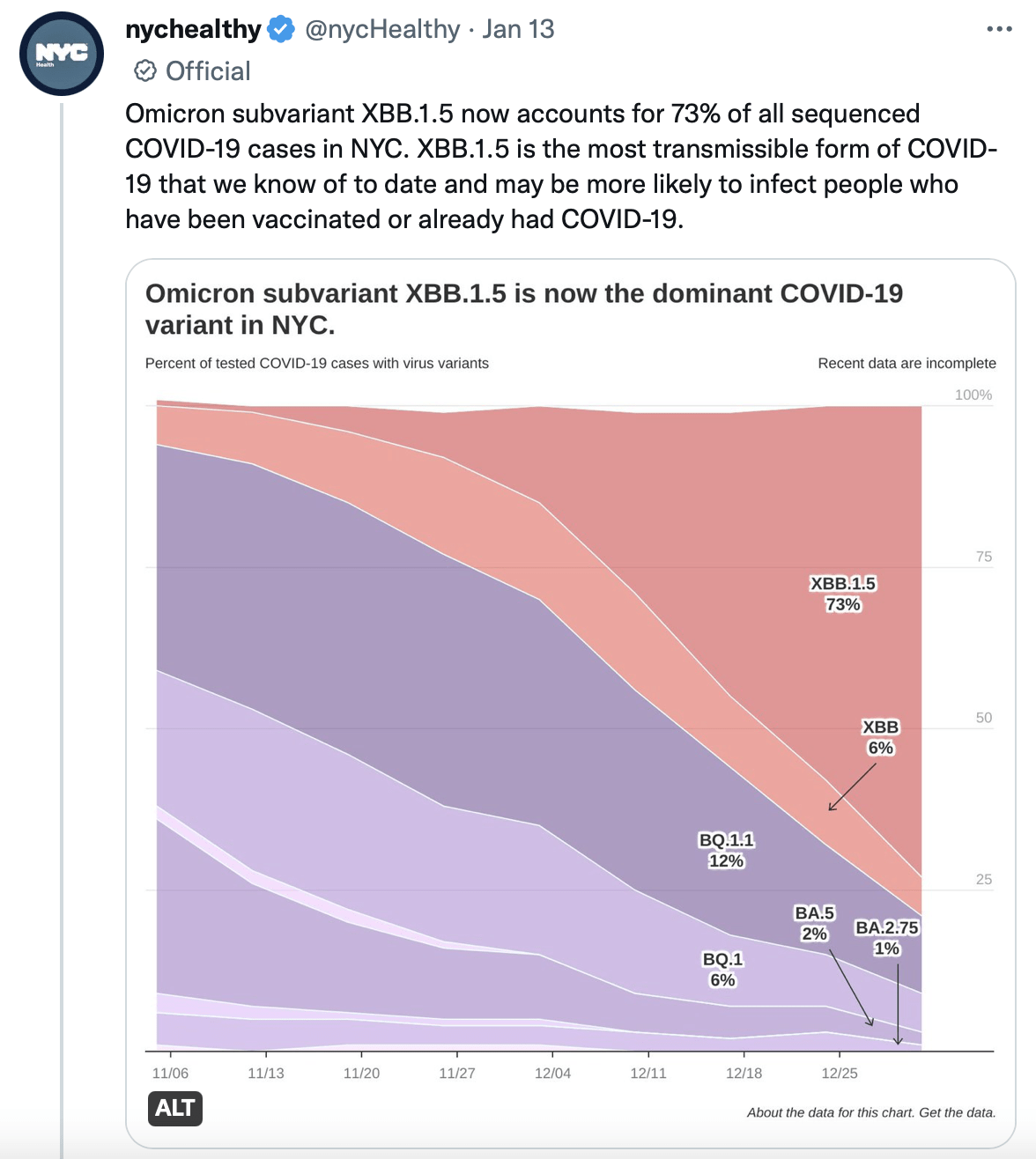
Figure 1. A screenshot of the @nychealthy tweet, showing a graph of the proportion of the variants for tested COVID-19 cases in NYC.
The NYC Health website also provides additional context making it clear what the tweet’s intended meaning was: “It may be more likely to infect people who have been vaccinated or previously had COVID-19 compared to prior variants.” [emphasis added]
However, the insufficient context in the tweet made it easy for some users to choose a frame of reference that suited their views. “In this case, they are incorrectly comparing the likelihood of infection between vaccinated and unvaccinated people,” Sethi explained, when it is really a comparison between different variants instead.
Health Feedback reached out to the NYC Department of Health and Mental Hygiene for comment. We will update this review if new information becomes available.
XBB.1.5 is the latest in a series of variants causing concern among scientists and public health agencies in the U.S. and Europe. Certain mutations it carries render the variant more infectious and more able to evade the immune system compared to earlier variants, enabling XBB.1.5 to outcompete other variants. As data from the U.S. Centers for Disease Control and Prevention (CDC) show, cases caused by XBB.1.5 have been steadily rising since early January 2023.
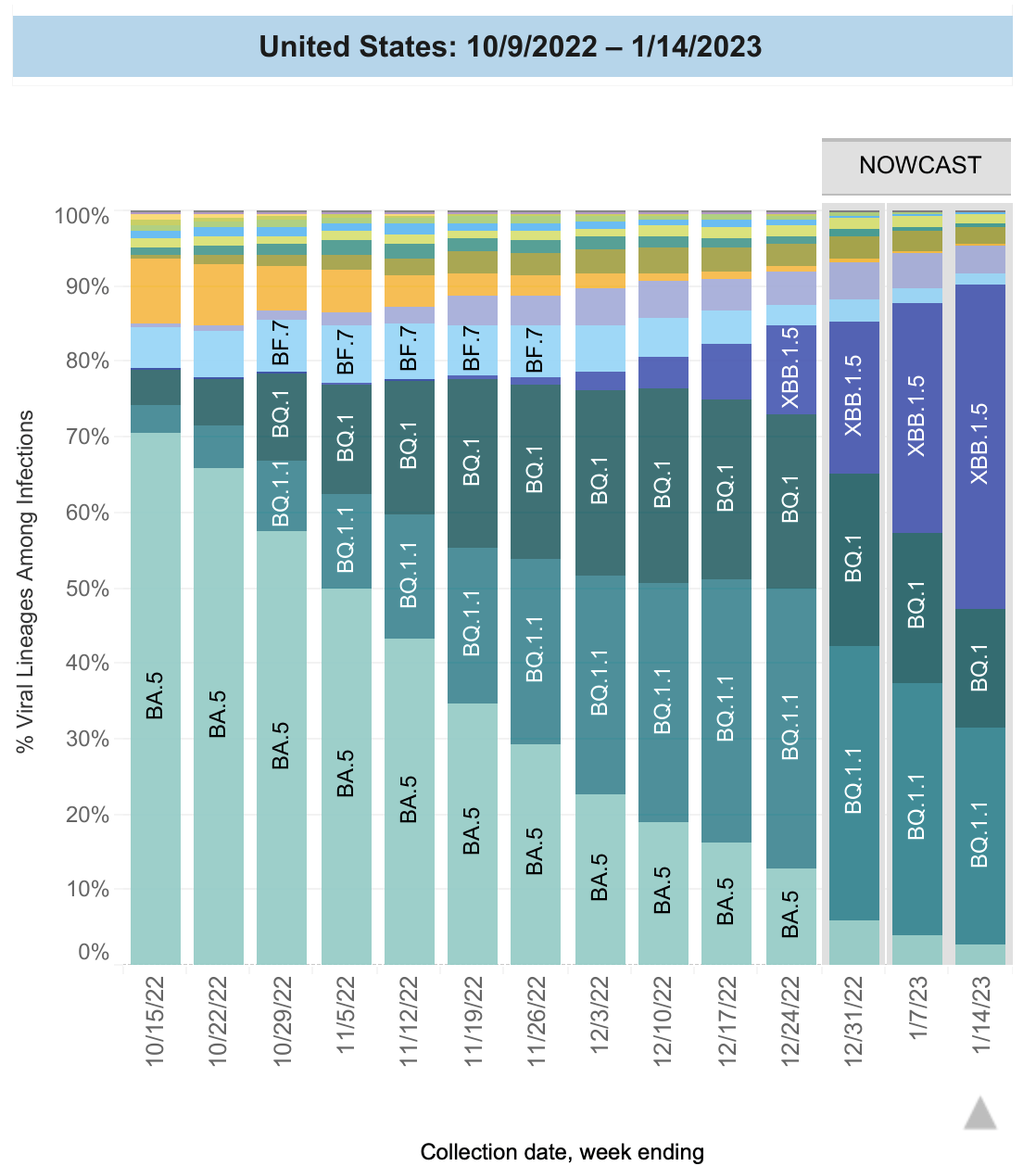
Figure 2. The proportion of SARS-CoV-2 variants detected in tested COVID-19 cases in the U.S. Source: U.S. CDC. Data retrieved on 17 January 2023.
Much of the concern stems from the possibility that XBB.1.5’s high infectivity and ability to evade immune defenses could cause a surge in cases and hospitalizations. But at the moment, there’s not enough evidence to determine if XBB.1.5 is more likely to cause severe disease.
There’s no evidence that XBB.1.5 preferentially infects vaccinated people over unvaccinated people, as some have claimed. And as the graphs below show, the evidence we do have so far indicates that it is unvaccinated people who are more likely to be infected and die from COVID-19 compared to vaccinated people.
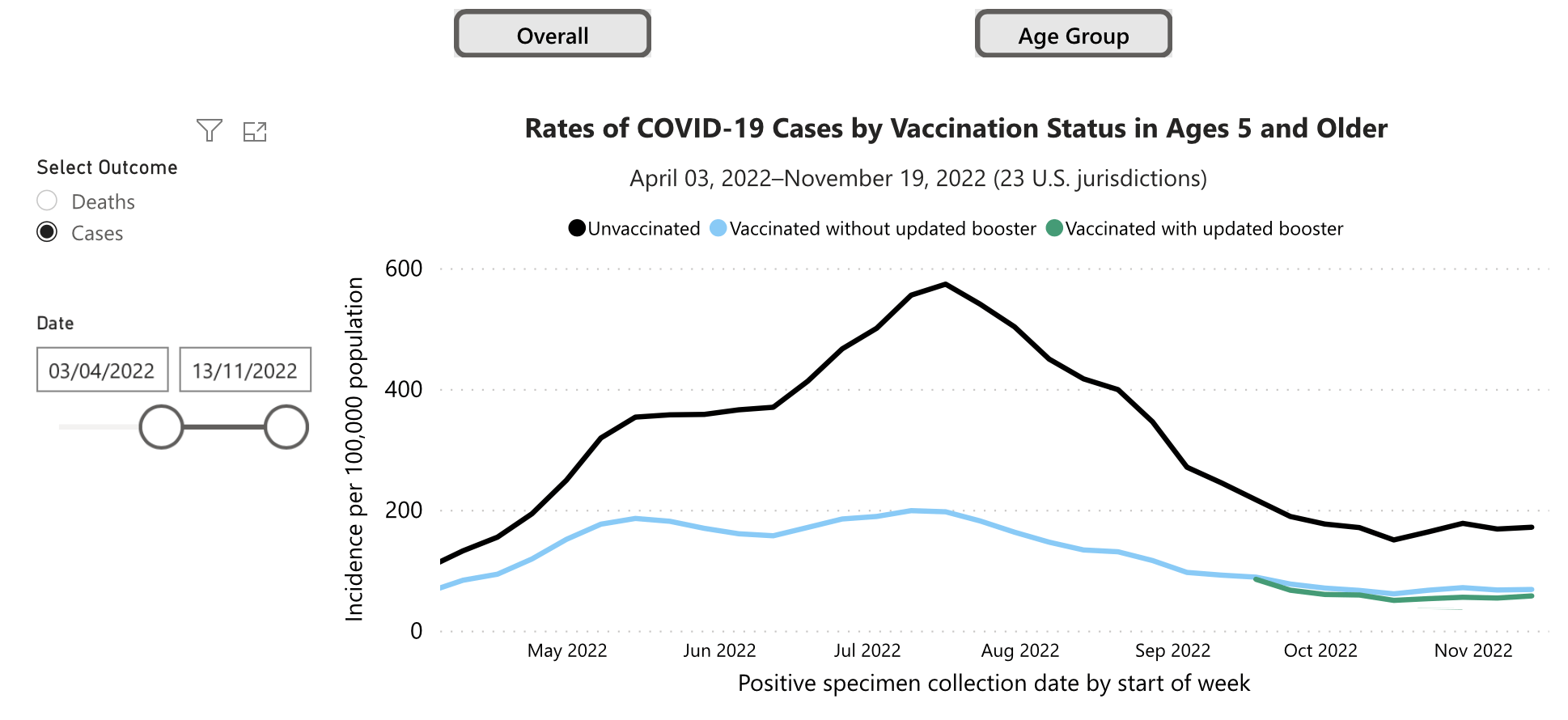
Figure 3. The rate of COVID-19 cases based on vaccination status. Source: U.S. CDC. Data retrieved on 17 January 2023.
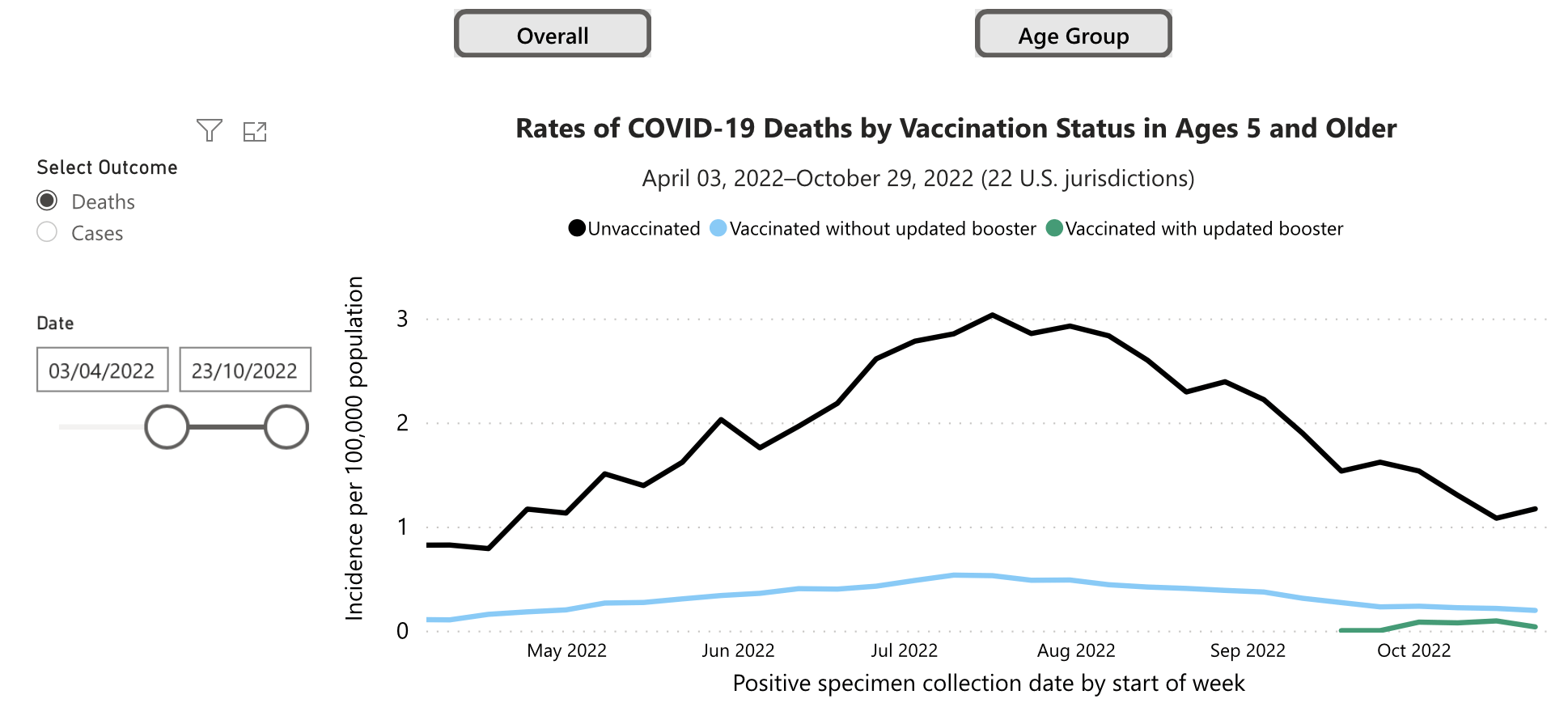
Figure 4. The rate of COVID-19 deaths, based on vaccination status. Source: U.S. CDC. Data retrieved on 17 January 2023.
Scientists’ Feedback

Professor (Population Health Sciences), University of Wisconsin-Madison
The claim that “vaccinated people are more likely than unvaccinated people to catch the Omicron variant XBB.1.5.” is false.
The newer XBB.1.5. variant has a growth advantage over the BQ.1 and BQ.1.1. variants and is becoming the new dominant form of the SARS-CoV-2 circulating. This replacement of other variants with XBB.1.5 started in New York and other northeastern states, as shown on the CDC COVID Data Tracker.
A growth advantage may be due to a newer variant being more infectious than previous ones or less affected by immunity already present in the population or a combination of both, which is the case for XBB.1.5.
The original tweet by @nychealthy (below) is missing some important context, specifically an “as compared to….” statement.
Implied but not explicitly stated is that XBB.1.5 is more likely to infect people who have immunity from the vaccine or previous COVID-19 infection as compared to previous variants.
Without that context, people who lack confidence in or choose to spread misleading information about COVID-19 vaccines fill in that missing information, consciously or subconsciously, with words that fit their false views. In this case, they are incorrectly comparing the likelihood of infection between vaccinated and unvaccinated people. The original tweet was well-intentioned, but misinformation spreaders and adopters took advantage of the missing context.


